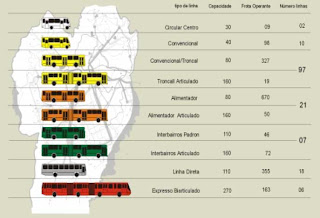
Congestion Pricing
London, New York City + Milan
Mary Banas
Why Congestion Pricing?Before the scheme was introduced in 2003 the average speed of traffic moving through central London had fallen to below 3mph. Traffic flow has now increased to just below 10mph.
As well as helping traffic flow the congestion charge also aims to improve the bus network, and make central London a more pleasant location for residents, visitors and businesses.
In every case where it has been implemented (London, Stockholm, and Singapore), congestion pricing has been successful at reducing traffic both within the “congestion zone” and outside it,
speeding bus service, decreasing delivery times, improving air quality, and cutting greenhouse gas emissions, with no material impact on the economy, including retail activity in the zone in which the charge applies.
LONDONSince February 2003 the city of London has charged a fee
for driving private automobiles in its central area during
weekdays as a way to reduce traffic congestion and raise
revenues to fund transport improvements.
Benefits+ significantly reduced traffic congestion
+ improved bus and taxi service
+ generates substantial revenues
+ public acceptance has grown
+ support to expand to other areas of London
+ London is model for other cities
How It Works
Motorists driving in central London on weekdays between 7:00 am and 6:30 pm are required to pay £5, increasing to £8 in July 2005. The charging area is indicated by roadside signs and symbols painted on the roadway. The scheme is policed by cameras on roads within the congestion zone which read car registration plates.
Drivers pay £8 per day by:
+ telephone
+ text message
+ mail
+ internet
+ in person at a retail outlet
It is also possible to pay up to midnight the day after travel, although the charge is then increased to £10. Drivers are able to purchase daily, weekly, monthly or annual passes. There are discounts for buying in advance.
NEW YORK CITY
New York City has a long-term transportation plan that includes Congestion Pricing for the Central Business District (CBD).
On a given workday, the Manhattan CBD is home to nearly 2 million workers from around the region, hundreds of thousands of tourists, and several hundred thousand residents. Cars compete for the road with buses, trucks pedestrians, cyclists and taxis.
Vehicles trapped in traffic spew pollution into the air, putting the health of those living near congested roads at risk; and the resulting jams cost the region more than $13 billion dollars every year.
As our population grows by another 900,000 people, we add more than
20 million visitors annually, and 750,000 new jobs—many concentrated in the CBD—the consequences of congestion will become ever more severe.
Implementation in Other CitiesImplementation requires a suitable combination of travel and political conditions, including widely dispersed benefits and the ability to overcome public skepticism. Compared with other cities London has a particularly small portion of automobile commuters, and many of them reside outside the city. As a result, a relatively large portion of voters perceive direct benefits from the fee. Voters in other cities may be more skeptical of such benefits.
SourcesBBC Guide to the Congestion Charge
Victoria Transport Policy Institute
Plan NYC 2030 (click on the Transportation PDF)
ECO PASS
MILAN
The city of Milan, Italy has launched a one-year trial of EcoPass—a scheme of graduated emissions-based charges for entry into Milan’s Limited Traffic Zone (Zona a Traffico Limitato, ZTL).
The EcoPass charges of up to €10(US$14.70) per day are calculated based on the Euro emissions class of the vehicle, the fuel type, the presence of approved filters, and the type of transport (personal or goods).
In addition to the daily access EcoPass card, Milan is offering a multiple access card (50 days of access, not consecutive, with a reduced price) and an annual subscription card for residents of the ZTL.
The ZTL is bounded by 43 gates equipped with electronic camera which record the passage of the vehicles, and debit the card holder’s account appropriately.
Results for Milan
First of all, traffic figures are down by 22.7 percent, or by 26.7 percent if you exclude public transport vehicles (buses and taxis). This had the side benefit of increasing the average speed of the vehicles that do remain by 11.3 percent. The figures for the subway train lines (Metropolitana) went also up, with more people (9.1 percent more) using it to access the city center.
The highest reduction in car usage came from the most polluting cars (those under the Euro I, II and III norms), which have to face higher prices to access the zone: the number of these cars dropped by 40 percent.
Maybe the most remarkable figure is the measurement of the quantity of certain pollutants. Pm10 (particulates under 10 micrograms) were down by 26 percent, NOx was down by 21 percent and ammonia by 40 percent.
Sources
Green Car Congress blog
Auto Blog Green





 Nothing as exemplementary has been established in the United States how ever several Proposals have been in development for California, the North- East, and Midwest regions
Nothing as exemplementary has been established in the United States how ever several Proposals have been in development for California, the North- East, and Midwest regions


















